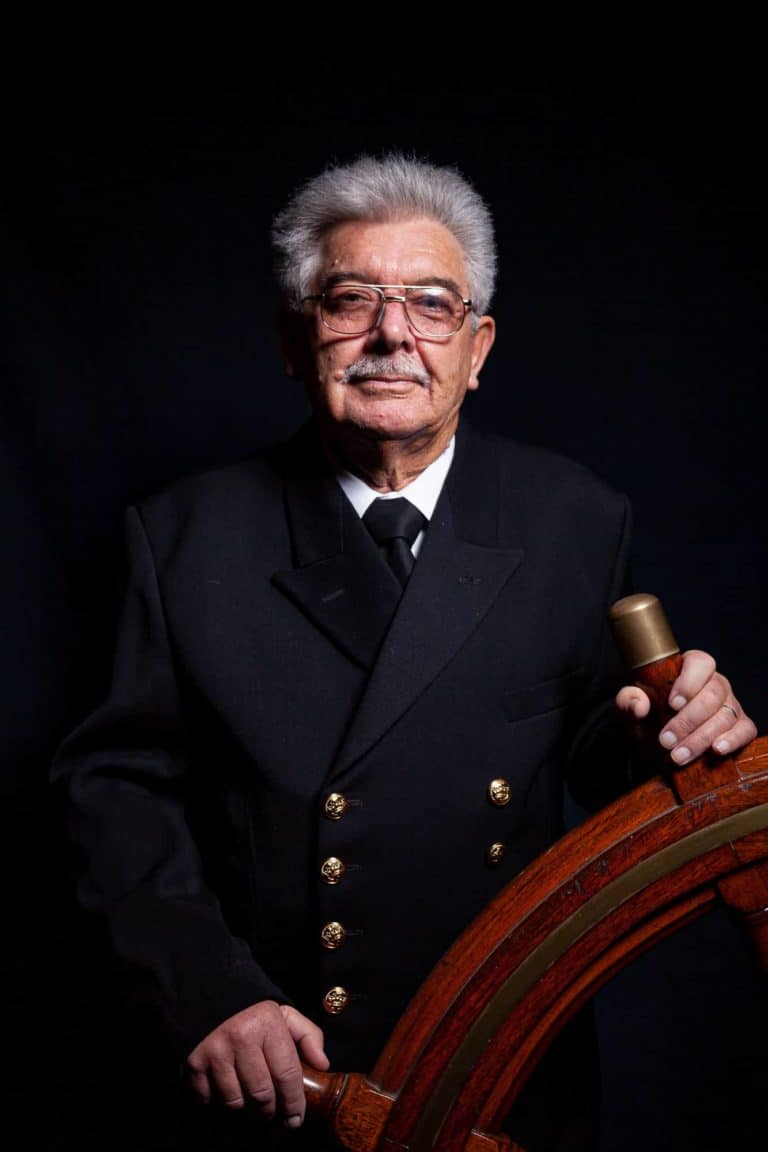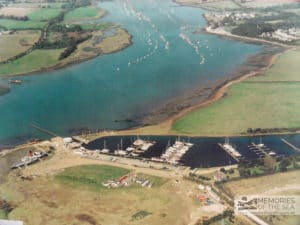Wayne Pritchett on Rivers and Harbours
Lisa: Can you tell me about your duties as Harbour Master when you first started?
When I first started of course, as I say, the commercial shipping was still active, so one of my main duties to start with was to keep up with the cargoes being landed at Newport.
What you’ve got to remember, when I say Newport Harbour, Newport Harbour commences from the Folly Inn southwards, that’s where the Borough boundary is, so any vessel what discharges south of the Folly Inn, i.e. at Stag Lane, where Vestas are now based, all the cargoes landed there came under us as well, so what you’ve got to remember in those days when I took over, at Stag Lane where Vestas is now, you had three separate companies.
You had Westminster Aggregates, which used to bring in sea dredged ballast for the cement industry, you had the Portland Cement Company, which ran two ships bringing cement from the London River to there, and you also had the Esso Oil tankers ‘cos when they moved out of Newport, they moved to Stag Lane initially before they went to Kingston, so one of my jobs was to go down there monthly to get all their paperwork up together so we could send them out bills ‘cos they had to pay for whatever cargo they landed. See, that was one function.
Over on the East bank of course there was nothing there, apart from the Marina where the ‘Medway Queen’ and Ryde paddleboats were, and then back up at Newport of course, I had to deal with the companies up there.
You had Scatts, who had cattle food brought on in the … what they called Blackhouse Quay, that’s the northern end of the Little London side of the river, I had to go and deal with them to see about their cargoes landing and bill them.
Next door the Gravel Yard where Ralph Cook is now, that was Gubbins and Born, Powell & Duffryn, PD Wharfage it was called later, and then it was called Site Services and now it’s called R J Cook and then of course I had to deal with all the Vectis Shipping Company cargoes, what was landed there.
Of course, when I say deal with them, I had to pick up their cargo manifest, it was only a declaration of what they brought up, you couldn’t … quite honestly you couldn’t keep up with them. If they said they brought up 100 tonnes in a boat and they brought up 120, you wouldn’t know.
And then of course there was all this business of weighing the grain lorries and further up the Quay, right opposite the Riverside Centre, of course you had the tar boats that used to come up. They used to come up … the Gas Works had been active. When the Gas Works closed in 1958, the by-product of making gas was crude tar. They used to take that tar to Eling in Southampton, refine it and bring it back to sell to the Isle of Wight Council to put on the roads.
But of course long after the Gas Works closed in ’58, the Council on the Island still wanted tar, so they weren’t making any tar because the Gas Works was long gone, but they were still shipping tar from Eling in Southampton up to Newport, so I had to go and deal with the Tar Company people, get their paperwork up, bill them, but that was my … as I was doing that, some years ago, probably in the late ‘60’s, about ’68, it was decided that the Folly area of the river would soon become a recreational place ‘cos when I first started there, there wasn’t a mooring down the Folly at all apart from the one what the timber ship used to moor on.
Completely empty down there and I saw all that being created, initially by Cowes Harbour Commissioners. They came up in the ‘60’s driving in piles up to the boundary line, which is approximately where the Folly Pier is, a diagonal line across to Northwood Church. That’s virtually the dividing line between Cowes Harbour Commissioners and the Isle of Wight Council as it is now, so it was decided … by Bill Huxley was before Vic Sheath, he came … Bill took over about 1959, so by the ‘60s, he could see what Cowes was doing and he said to his employers, “Well, we ought to get in on this. There’s a fine pub there.”
Folly Inn was nothing like it is today, it was quite a lot quieter, and he said, “There’s a good pub there, yachtsmen are going to come up there and we can see they are already going in there, so we ought to create moorings.”
So, the Council at the time, which was the Borough of Newport, put a few mooring piles in, I think we put the first piles in in 1970, second-hand gas pipes and some of them not long took out, when I say gas pipes, they were 10-inch tubes, second-hand tubes, to see what happened.
Well, of course the yachts liked it because our area of the river was right outside the pub. Cowes was further down so we could see this was going to be popular so when Bill Huxley … well he actually died whilst he was in the job, when Vic Sheath took over, Vic had been a sailing man himself.
As I say, he was born on the river but he was also a big member of Gurnard Sailing Club, he used to do dinghy sailing and so on, so he encouraged the Council to increase the moorings down the Folly, so by the time Vic Sheath retired in 1984, we had 75 moorings of our own down the Folly. I could see that was going to be a money spinner. By the time I finished, I had 212 down there. I increased that to 212 moorings down there and we used to sell every one.
But now, it’s dropped right off now. I mean a lot of the working people can’t afford small fishing boats and we’re lucky to sell 160 now, so we took a lot of the moorings up because we had no call. Otherwise you’ve got to maintain them you see, so whilst that was going on and I was looking after all the cargo companies, they also expected me to dredge the mud out of the river so, you can see it was a busy time.







